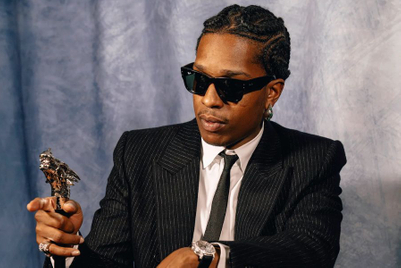What do white-collar professionals, performing artists, college students, nurses, engineers, TV hosts, entrepreneurs, sales representatives, train drivers, airport traffic controllers, Airbnb hosts, and freelancers born between 1990 and 1999 in Beijing, Xi’an, Taiyuan, Wuhan, Chengdu, and Shenzhen have in common?
According to Ogilvy China's qualitative research, they amplify pointed differences in knowledge levels and perceptions of the luxury category from the previous generation of senior buyers.
And they all share a collective value system around 'how to become a better me', leading to new implications for the luxury industry.

Pictures drawn by the post-90s when asked by Ogilvy to illustrate their current lives and future aspirations
1. FROM 'A BADGE OF STATUS' TO 'A BADGE OF ME'
For the parents of the post-90s generation, luxury brands served as 'a badge of status'. A few classic luxury products served as universally-recognised status symbols. For their children, owning luxury products does not mean much unless they enhance their personal styles. The new game rule for luxury brands is to serve as 'a badge of me' to help the post-90s in shaping their unique individual image via a product portfolio that has enough variety, according to Ogilvy.
2. FROM 'SHOWING MONEY' TO 'SHOWING TALENT'
Twenty or thirty years ago, when someone wore a luxury brand, what did that communicate to other people? It showed they had money, or a sense of pride for having money. But today’s young people don’t like the feeling of being perceived as 'rich', but as 'interesting' and 'talented'. Luxury brands should help the post-90s exhibit their talent and display their intellectual achievements, such as being well-travelled, rather than show what an extravagant life they live, according to Ogilvy.
3. FROM 'UNAPOLOGETIC MENTALITY' TO 'COMPANION MENTALITY'
Luxury brands, unlike brands from most other categories, do not ask the consumer for permission because they think the House knows best, and the consumer can either participate in the brand’s style or move along. This unapologetic mentality is almost always evident in the brand’s communication tone and store service. However, this needs to be changed for the new generation who find the "formalness" of the luxury store atmosphere a turnoff, according to Ogilvy.
4. FROM 'SCARCITY' TO 'VIRTUAL RARITY'
Luxury brands used to be either very expensive or difficult to obtain, as scarcity marketing creates value. This requires adjustments for the post-90s as while they want to own something nobody else owns, they identify more with the feeling of privilege and of exclusivity, according to Ogilvy, quoting academics John Groth and Stephen McDaniel. One way to create 'virtual rarity' is regularly launching limited-edition collections that are related to post-90s’ hobbies and interests.
5. FROM 'A LIFETIME ACHIEVEMENT' TO 'A LIFETIME RECRUITMENT'
The old game rule dictates luxury brands to position themselves as the ultimate dream purchase. An older consumer believes they will only be able to afford a handbag when they make X amount of money (that takes a lifetime to make). This approach, when transferred to younger contemporaries, does not resonate. According to a Mintel study from May 2017, emotions associated with luxury are less about superiority for the post-90s. Luxury brands should start recruiting buyers at an early age and offer a mixture of products at each life stage to reward their self-improvement efforts.
6. FROM 'OFFLINE' TO 'OMNICHANNEL CUSTOMER EXPERIENCE'
In the old days, the consumer journey is very simple. Today, there are many touchpoints in the process—as many as 85,000 different combinations according to a BCG study, from the discovery phase to the post-purchase phase. Moreover, not all touchpoints are created equal, evoking different levels of trust across different ones. Omnichannel customer experience is the panacea. Social CRM tools such as WeChat mini-programs have accelerated this in China, according to Ogilvy.






.jpg&h=334&w=500&q=100&v=20250320&c=1)
.jpg&h=334&w=500&q=100&v=20250320&c=1)
.jpg&h=334&w=500&q=100&v=20250320&c=1)
.jpg&h=334&w=500&q=100&v=20250320&c=1)
.jpg&h=334&w=500&q=100&v=20250320&c=1)





.png&h=268&w=401&q=100&v=20250320&c=1)

.jpg&h=268&w=401&q=100&v=20250320&c=1)
.png&h=268&w=401&q=100&v=20250320&c=1)
.jpg&h=268&w=401&q=100&v=20250320&c=1)
